Archaeology & History
In Pictures: A Remarkable Spanish Shipwreck Is Yielding New Insights Into How the Ancient Romans Lived
The boat contains over 300 ancient amphorae, many in pristine condition.
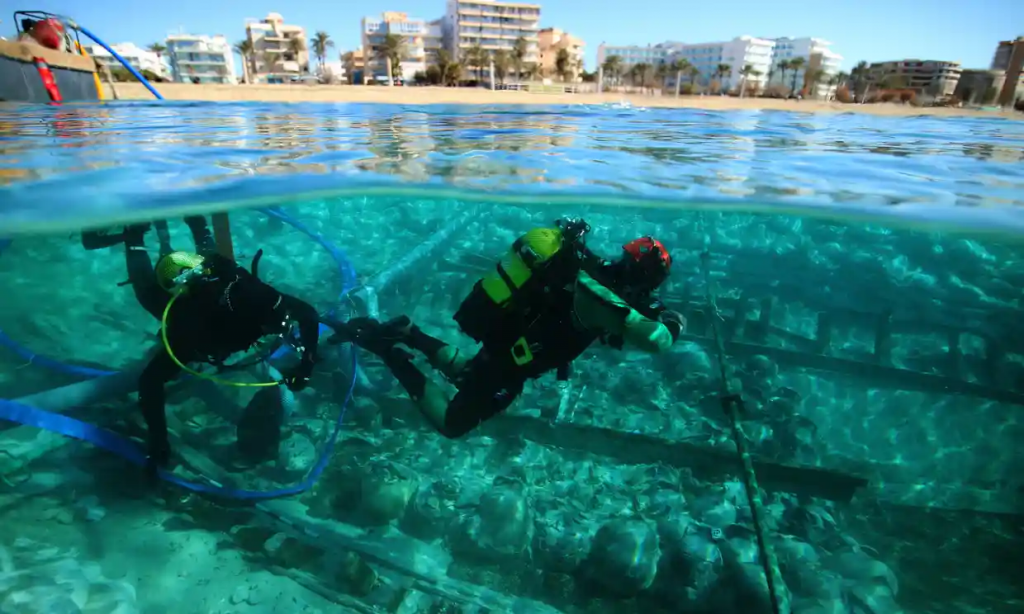
The boat contains over 300 ancient amphorae, many in pristine condition.

Caroline Goldstein

During the summer of 2019, a storm hit off the coast of Mallorca’s Ca’n Pastilla beach. The churning waters jostled free the wreckage of a Roman merchant vessel Ses Fontanelles, lost to the world since it sank around the middle of the 4th century C.E.
In the years since, the ancient wreck has been the subject of extensive study as part of a collaboration between the universities of Barcelona, Cádiz, and the Balearic Islands known as Consell de Mallorca. Together, these institutions have undertaken a three-year project dubbed Arqueomallornauta (2021-2023), to take stock of underwater discoveries.
The results, the Consell de Mallorca researchers say, are “frankly exceptional.”
Some 300 amphorae have been unearthed from the cargo holdings. While some are in pieces, many are in remarkably pristine condition. Scientists say the ancient containers were used to transport both fermented fish sauces as well as oil and wines that would’ve been used to preserve fruit.
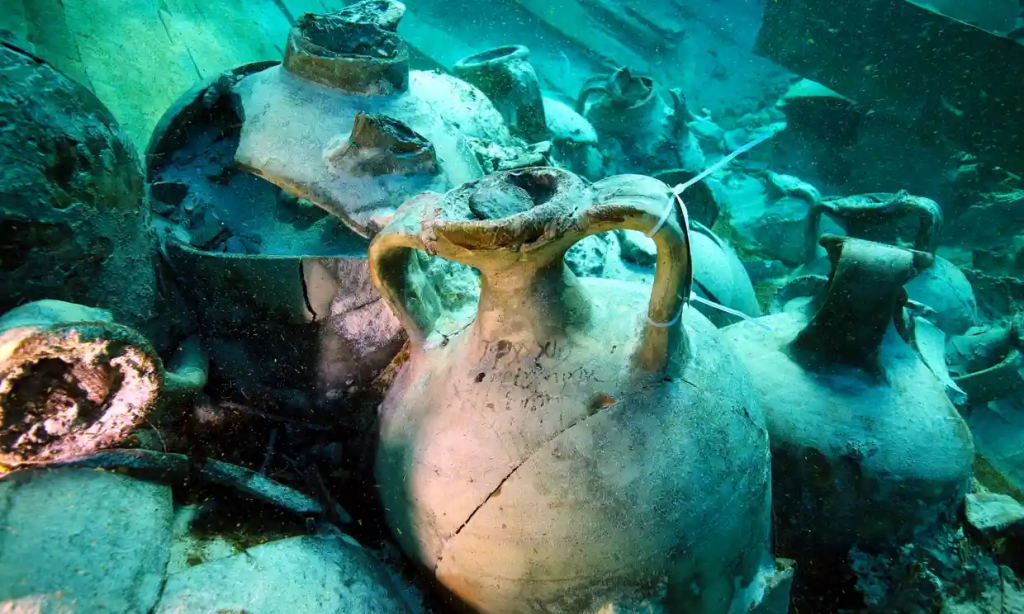
Beautifully preserved amphorae from the wreck of a fourth-century BCE Roman merchant vessel in the sands of the Bay of Palma. Photo by Jose A Moya/Arqueomallornauta – Consell de Mallorca, Universitat de Barcelona, Universidad de Cádiz, Universitat de les Illes Balears
The amphorae are decorated with painted inscriptions called tituli picti—in fact, 100 painted labels in total were discovered among the wreckage, making it the largest collection of tituli picti in Spain. These provide insight into the crew’s life onboard, as well as into what shipping and trade was like during the 4th century C.E. in the Mediterranean.
A video posted by the University of the Balearic Islands featuring Enrique García, professor of art history and theory, gives a sense of the riches of the site.
Various other “exceptional archaeological treasures” were also found: a bow drill that would have been used by carpenters to repair boats, the first to appear in Spain and one of the few ever discovered; two shoes, one espadrille and one leather; ropes; and various organic remains.
The 12-meter long, six-meter wide (40-feet by 18-feet) boat is itself a maritime treasure in very good condition, likely because it was preserved under sediment, preventing oxidation. “The most surprising thing about the boat is just how well preserved it is—even the wood of the hull… It’s wood that you can knock—like it’s from yesterday,” Dr. Miguel Ángel Cau, an archaeologist at the University of Barcelona, told the Guardian.
Analysis of the Ses Fontanelles and its contents led researchers to establish that the boat would have sailed from the region of Cartagena, Spain.
Because the boat was discovered only two meters below sea level and just 60 meters from the coastline, archaeologists worry that it is vulnerable to looting or prone to destruction, if another storm hits in the same place. A group of specialists are proceeding with the excavation and study, as well as considering a potential excavation of the hull and partial recovery of the furniture inside.
See more photos of the wreck below.
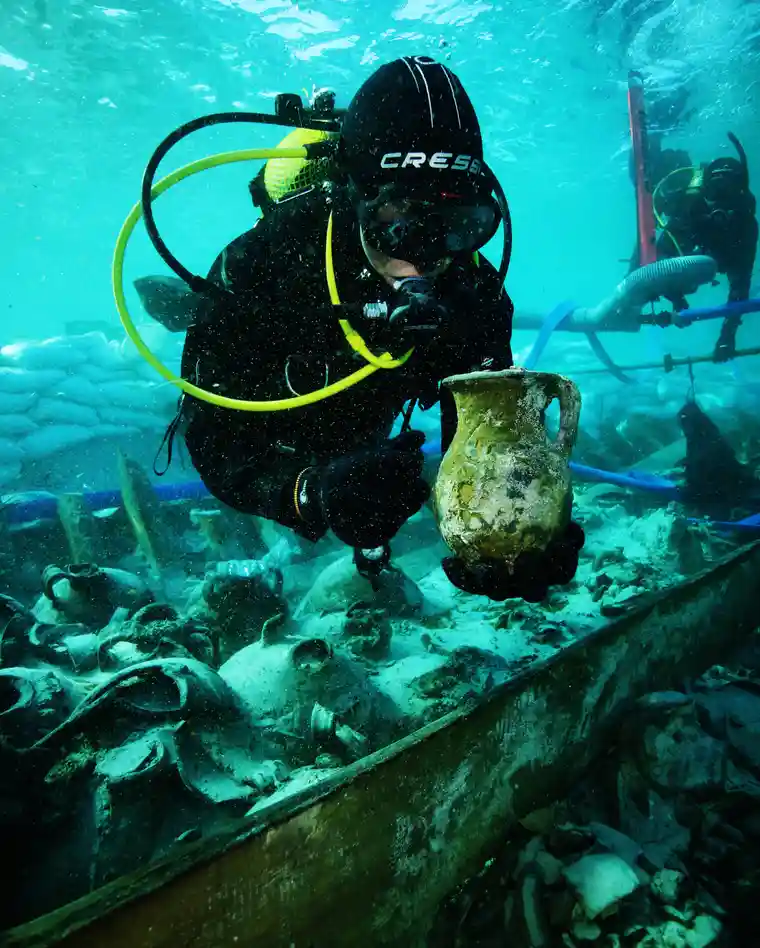
A diver recovers an artifact from the Spanish shipwreck. Photo by Jose A Moya/Arqueomallornauta – Consell de Mallorca, Universitat de Barcelona, Universidad de Cádiz, Universitat de les Illes Balears
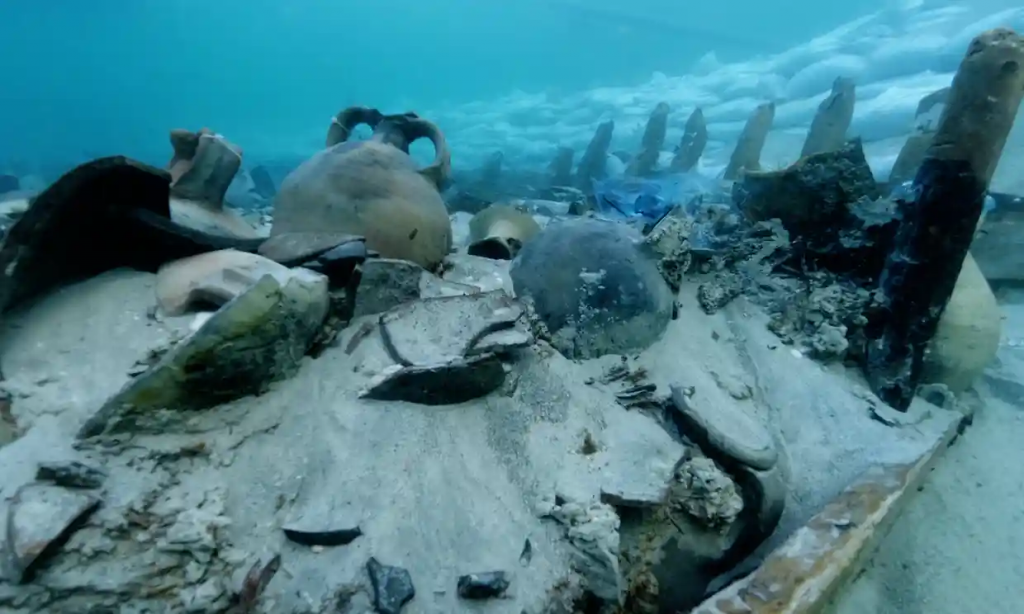
Artifacts from the Spanish shipwreck. Photo courtesy of Arqueomallornauta – Consell de Mallorca, Universitat de Barcelona, Universidad de Cádiz, Universitat de les Illes Balears
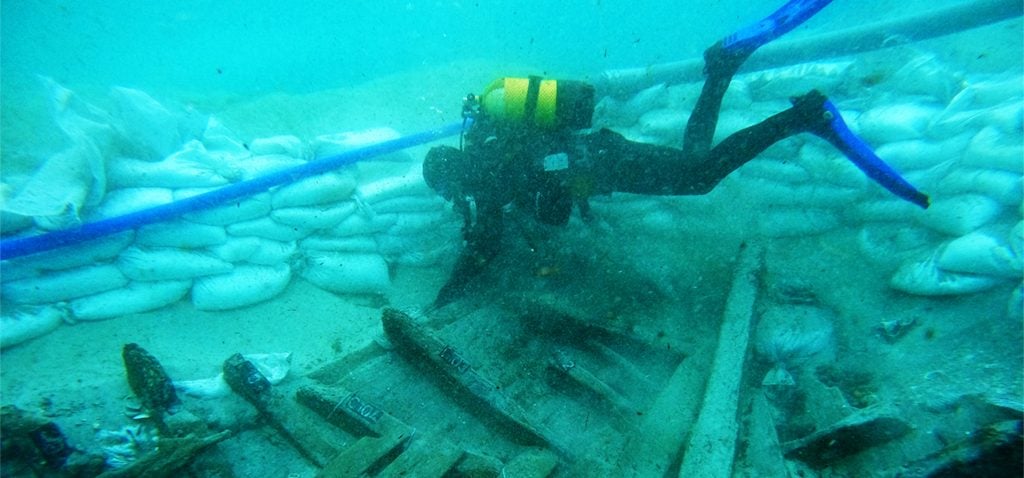
A diver explores the Spanish shipwreck. Photo courtesy of Arqueomallornauta – Consell de Mallorca, Universitat de Barcelona, Universidad de Cádiz, Universitat de les Illes Balears